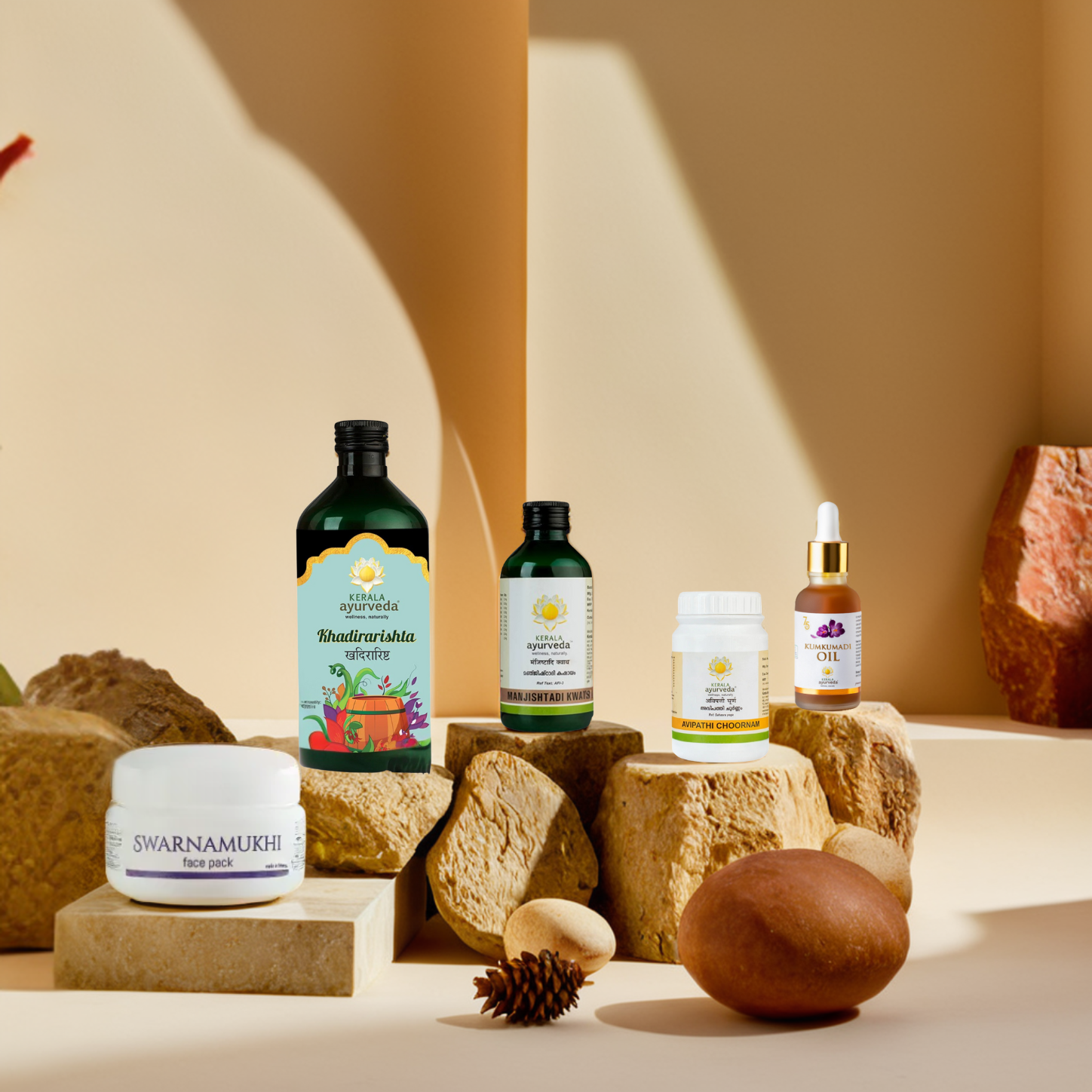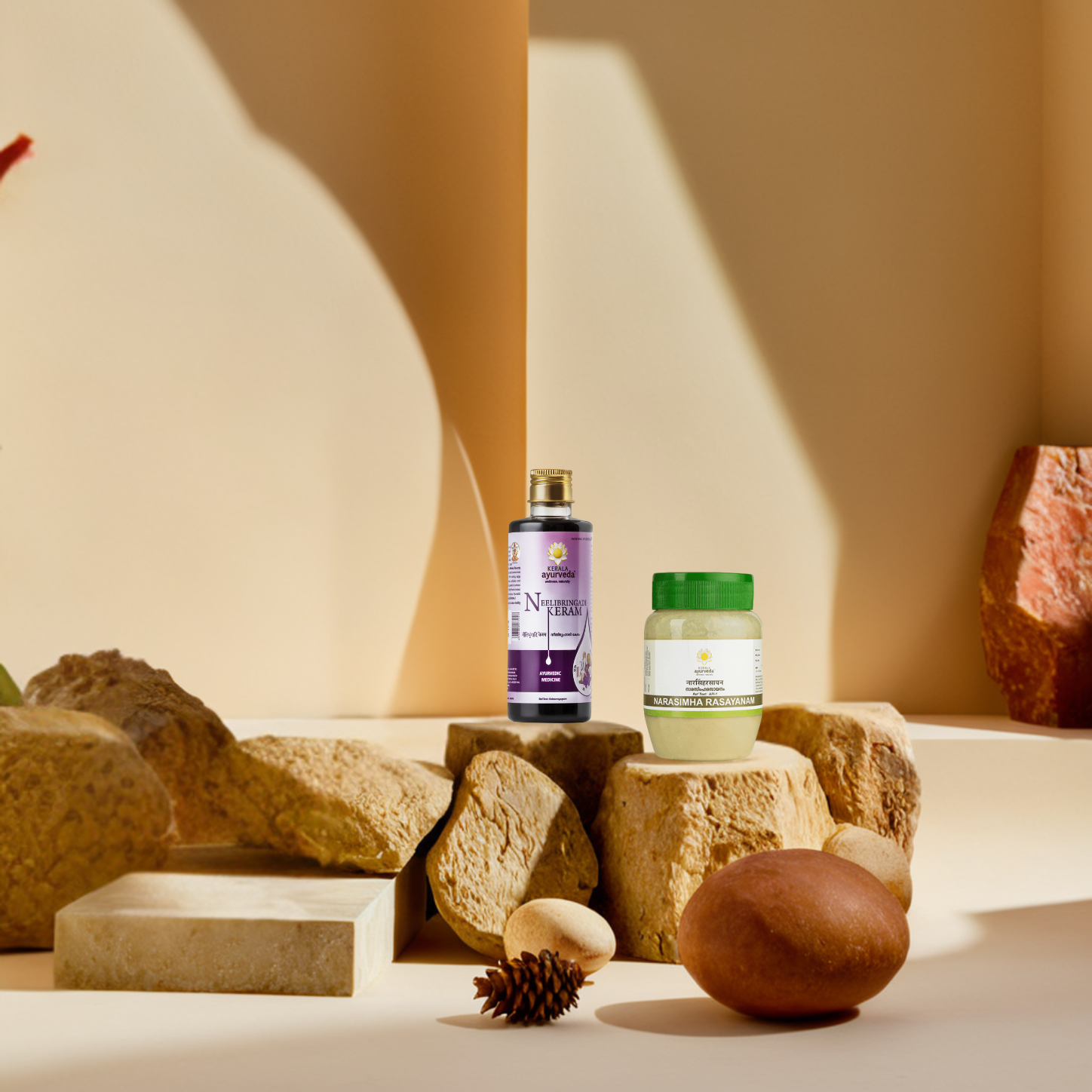Ever feel bloated after a meal or wake up tired even after a full night’s sleep? It happens and sometimes, it’s not just about what you eat or how much you rest. It’s more about how your body is processing everything. That’s where something like Choornam can really help.
It’s an Ayurvedic remedy that’s been around for centuries, and people love it because it supports everything from digestion to skin health. What really makes it stand out is its flexibility. You can mix it into drinks, use it as a face mask, or easily work it into your daily wellness routine.
In this blog, you’ll explore Choornam, where it comes from, why it’s still so useful today, and how people use it in their everyday routines. It’s one of those old-school remedies that still works wonders; simple, natural, and effective.
What is Choornam?
Choornam is a herbal powder made from a mix of medicinal herbs, spices, and plant parts; each one picked for its unique healing benefits. It’s been a go-to remedy in Ayurveda for all sorts of health issues. Whether it’s helping with digestion, calming inflammation, or giving your immunity a boost, Choornam works to keep your body in balance.
What’s really nice about it is how adaptable it is. Depending on which herbs are in the mix, it can help with different things like stomach troubles, skin problems, or just feeling more balanced overall. And because it’s a powder, your body can absorb it easily and start benefiting quickly.
It’s also pretty interesting to take a look at how this herbal powder is actually made.
How is Choornam Made as per Ayurveda?
Back in the day, making Choornam was a slow and careful process. Traditional tools like the Khalva Yantra (grinding stone) and Ulukhala Yantra (mortar and pestle) were used. It took real skill, patience, and attention to detail to grind the herbs just right and mix them properly.
These days, things are much easier. Equipments like pulverizers and mills can grind herbs into a fine powder quickly and efficiently. And, the best part is that these modern methods still preserve the strength and quality of the herbs, so you're getting the same benefits with a lot less effort.
Ayurveda has many ways to prepare herbal remedies, and Choornam is one of the classics. It’s a step up from Kalka, a wet herbal paste, because Choornam uses dried herbs that are ground into a fine powder. Here’s how Choornam is prepared:
- Picking the right herbs: It all starts with choosing the right herbs and spices, not just any, but ones that match the health issue you want to support. Whether it’s digestion, detox, or easing inflammation, the herbs are picked with purpose.
At Kerala Ayurveda, we ensure every herb comes from farmers who grow them naturally using organic and eco-friendly methods. That way, only the purest and most potent plants make it into our products. - Measuring with care: Once the herbs are selected, they’re measured out carefully using traditional Ayurvedic wisdom. This helps make sure the mix is balanced and effective.
- Grinding it fine: The herbs are then ground into a fine powder. This helps unlock their active plant compounds, so your body can absorb the benefits more easily.
- Sifting for smoothness: After grinding, the powder is sifted to remove any rough or uneven bits. The goal is to get a smooth, even texture that’s easy to use.
- Mixing it all together: Finally, the sifted powder is mixed really well in a clean, wide bowl. This step ensures every spoonful of Choornam gives you the same goodness, no matter when you take it.
Each step may be simple, but it’s done with care and purpose. That’s exactly why Choornam remains a trusted and effective remedy in Ayurvedic wellness. Once you get how Choornam is made, it’s easier to see why it’s so useful. The texture of the powder can change depending on the herbs and how it’s meant to be used.
Common Types of Choornam Based on Textures
In Ayurveda, Choornams are herbal powders, but not all powders are the same. They come in different textures depending on how you plan to use them. Let’s break it down:
|
Type |
Texture |
Common Uses |
|
Coarse Powder |
Rough, like tea leaves |
Ideal for decoctions (Kwath/ Kashayam), infusions, herbal teas |
|
Fine Powder |
Smooth, talcum-like |
Easy to take with water, honey, or ghee; used in Avalehas, oils, and ghee |
Texture definitely matters when it comes to using Choornam, but what really sets each one apart is the mix of herbs that go into it.
Common Types of Choornam Based on Ingredients
When it comes to Choornams in Ayurveda, the ingredients really make all the difference in how they work and what they’re good for. Let’s look at the different types of Choornams based on their ingredients and how they can support your health in various ways:
|
Type |
Ingredients |
Purpose/Example |
|
Single Herb Choornam |
Made from one herb only |
Ginger Choornam for digestion, Sandalwood Choornam for skin soothing |
|
Poly-Herbal Choornam |
Blend of multiple herbs based on traditional formulations |
Triphala Choornam for detox, Trikatu Choornam for metabolism and digestion boost |
|
Herbo-Mineral Choornam |
Combination of herbs and minerals/metals (used under Ayurvedic guidance) |
Pushyanuga Choornam for reproductive health issues like leucorrhea |
Ayurvedic practitioners mix herbs and sometimes minerals in different ways to create Choornams that can help with everything from digestion to detox and more. Since Choornam is made from different herbal blends, it’s clear why each type has its own special purpose.
What are the Different Uses of Choornam?
Choornams are super versatile in Ayurveda and can be used in lots of ways, both inside and outside the body. Here’s how they come into play:
1. Oral Medicines
Choornams are often taken directly as medicines for various health issues. Some popular ones you might hear about are Hingwashtaka Choornam, Talisadi Choornam, and Sitopaladi Choornam.
2. As an Adjuvant
Sometimes, Choornams are mixed with other medicines to boost their effects. For example, Swarna Bhasma is combined with Trikatu Choornam to enhance digestion, boost metabolism, and support respiratory health. Abhraka Bhasma pairs with Talisadi Choornam to manage respiratory disorders.
3. Making Other Ayurvedic Remedies
Choornams aren’t just used on their own; they’re great for making other Ayurvedic products too:
- For Lepa (Herbal Pastes): Mixed into pastes that are applied on the skin for healing.
- For Secondary Preparations: Used in products like Avaleha (herbal jams), Vati (tablets), and Asava (fermented tonics).
- In Herbal Ghee and Oils: When blended into ghee or oils, Choornams help pull out both water and fat-soluble benefits from herbs.
- For Avaleha (Herbal Jams): Added to jams to boost their medicinal power.
4. External Uses of Choornam
Choornams are also handy for external treatments, from skin care to muscle pain relief. Here are some examples:
- Udvartana (Powder Massage): Used to treat obesity by massaging powdered herbs into the skin to break down fat. Kola Kulatthadi Choornam, made with jujube and horsegram, is a common one.
- For Dusting on Wounds: Herbs like Neem and Triphala help cleanse wounds and speed healing.
- For Nasal Inhalation (Pradhamana Nasya): Powders are inhaled to clear excess Kapha or help with issues like insomnia. Katphala Nasya is one example.
- As Tooth Powder: Herbs like Licorice, Neem, and Toothache Tree clean teeth, heal gums, and reduce swelling. Clove is often added for its medicinal value and fresh taste.
- For Skin Pain Relief: Some Choornams are made into pastes to ease muscle or joint pain, like Kottamchukkadi Choornam for arthritis.
- Headache Relief: Rasnadi Choornam mixed with Ksheerabala Thailam can be applied to the forehead to ease headaches, especially from excess Pitta.
- Sweating Treatment (Sweda): In therapies like Podikizhi, herbal powders are tied in a heated bolus and massaged on the body to relieve pain and tension.
Choornams work best when they’re taken the right way, and that usually means pairing it with a co-drink.
Why Should You Always Take Choornam with a Co-Drink?
In Ayurveda, you don’t usually take Choornam alone. If you do, it can be a bit harsh, sometimes causing throat irritation or even making you feel nauseous or sick. That’s why we use something called Anupana, or co-drinks. You take these liquids along with the Choornam to make it easier on your body and help the herbs work better.
The type and amount of co-drink really depends on your dosha imbalance, basically, what’s out of balance in your body. Here’s how it works:
- If you have a Vata imbalance (think dryness, nervous system issues), you’ll want to take about three times the amount of co-drink compared to the Choornam. This helps calm that dry, restless energy and makes the herbs easier to absorb.
- For Pitta imbalances (like inflammation or acidity), the co-drink should be about double the amount of the Choornam. This helps cool things down and balance the fiery heat inside.
- If Kapha is the problem (usually heaviness, mucus, or sluggishness), you take the co-drink in equal parts to the Choornam. This balances the heavy, damp qualities Kapha brings.
So, picking the right co-drink and amount helps your body get the most out of the Choornam without any discomfort. Once you know why taking Choornam with a co-drink matters, you might be curious how much to take to get the best results.
How Much Choornam Should You Take?
When it comes to taking Choornam, the dose really matters; it’s all about finding the sweet spot where you get the benefits without overdoing it. Ayurveda does give us some traditional guidelines, but in real life, the amount you take can vary based on your body and the specific Choornam you're using.
Traditional Dosage
Classical Ayurvedic texts claim that the standard dosage is around 12 grams. That’s the amount often mentioned for general health and balance. But remember, this was set in a time when lifestyle and digestion patterns were very different from today. So while knowing the traditional base is good, it doesn’t mean you must stick to it rigidly.
Practical Dosage
In today’s context, many people find that 3 to 6 grams per day works really well. You can take it all at once or split it into two smaller doses, each for morning and evening. This is easier on your system and more manageable to fit into your daily routine.
At the end of the day, the best dosage depends on your body, your health needs, and the specific Choornam you’re using. Start small, see how your body responds, and adjust if needed. And if you’re not sure where to begin, checking in with an Ayurvedic practitioner can help you adjust the dosage to your needs. Plus, it’s also important to know how long it stays fresh and effective.
What is the Shelf Life of Choornam?
How long Choornam lasts really depends on how you store it. Ayurvedic text Sharangdhara Samhita claims that choornam usually stays good for about 2 months when stored the usual way. But if you keep it in an airtight container, it can last up to 6 months.
Nowadays, most Choornams on the market stay fresh and effective for around two years because of better packaging and preservatives. So, basically, the better you store it, the longer it’ll last and keep all its benefits intact.
Once you know how long Choornam stays fresh, it’s worth checking out the extra ingredients that improve its performance and make it easier to use.
Helpful Additions That Boost Choornam
In Ayurveda, Choornams are often mixed with other ingredients called adjuvants to boost their healing power. These helpers make it easier for your body to absorb the herbs, balance their effects, and improve how well the treatment works. Here’s a quick look at how different adjuvants are used with Choornams:
- Jaggery: When using jaggery, you mix it in equal parts with the Choornam. So, if you’re taking 3 grams of Trikatu Choornam, add 3 grams of jaggery. It’s usually taken after meals for a couple of weeks to support digestion and detox.
- Sugar Candy: If you go for sugar candy, add twice the amount of Choornam. It sweetens the mix and helps calm the body.
- Ghee, Honey, or Sesame Oil: These nourishing ingredients are added in double the amount of Choornam. They help carry the herbs deeper into your system and strengthen the effects.
- Other Liquids: For liquids like water or herbal tea, use four times the amount of Choornam. This helps tone down the strong taste and makes it easier to take.
Using the right adjuvants with Choornams can really boost their benefits and make them even more effective for whatever health issue you’re tackling.
Top Ayurvedic Choornams from Kerala Ayurveda
Kerala Ayurveda brings you some of the most effective choornams to help you feel your best every day. Here's a list of the top Ayurvedic choornams:
- Triphala Choornam: Relieves gastrointestinal problems, helps with weight management, and heals skin issues.
- Ashta Choornam: Aids digestion and is commonly used for flatulence and indigestion.
- Karpooradi Choornam: Allows instant relief from indigestion and vomiting problems.
- Shaddharana Choornam: Used for various digestive disorders, including gas trouble, abdominal bloating, indigestion, constipation, and diarrhea.
- Avipathi Choornam: A mild laxative used to relieve constipation, cleanse the colon, and promote gut health.
- Jadamayadi Choornam: Acts as an anti-inflammatory and analgesic, relieves burning sensation and swelling.
Conclusion
Choornam is a classic Ayurvedic herbal powder that’s been trusted for ages because it’s so versatile. It’s made from a blend of carefully chosen herbs and spices that help with digestion, detox, boost immunity, and balance your body’s energy. You can take it in different ways; mix it with water, milk, or honey, whatever works best for you.
You can even use it on your skin as a paste or during a massage. It’s simple but super effective. Adding Choornam to your daily routine is a great way to tap into Ayurveda’s natural and balanced approach to staying healthy.
Ready to bring the natural goodness of Ayurveda into your daily routine? Explore Kerala Ayurveda’s authentic Choornam and discover how this simple herbal powder can support your digestion, immunity, and overall wellness.
FAQs
1. What are the benefits of using choornam?
Choornam powder helps support digestion, detoxification, diabetes, and overall wellness. It is made from carefully selected natural herbs known for their healing properties.
2. What is choornam made from?
Ayurvedic Churna is made from different parts of plants like roots, stems, leaves, flowers, fruits, or sometimes the whole plant.
3. Is eating choornam good for health?
Yes, when taken correctly, choornam can be great for your health. But like any remedy, it's important to choose the right one for your needs and take it in the proper dose.





